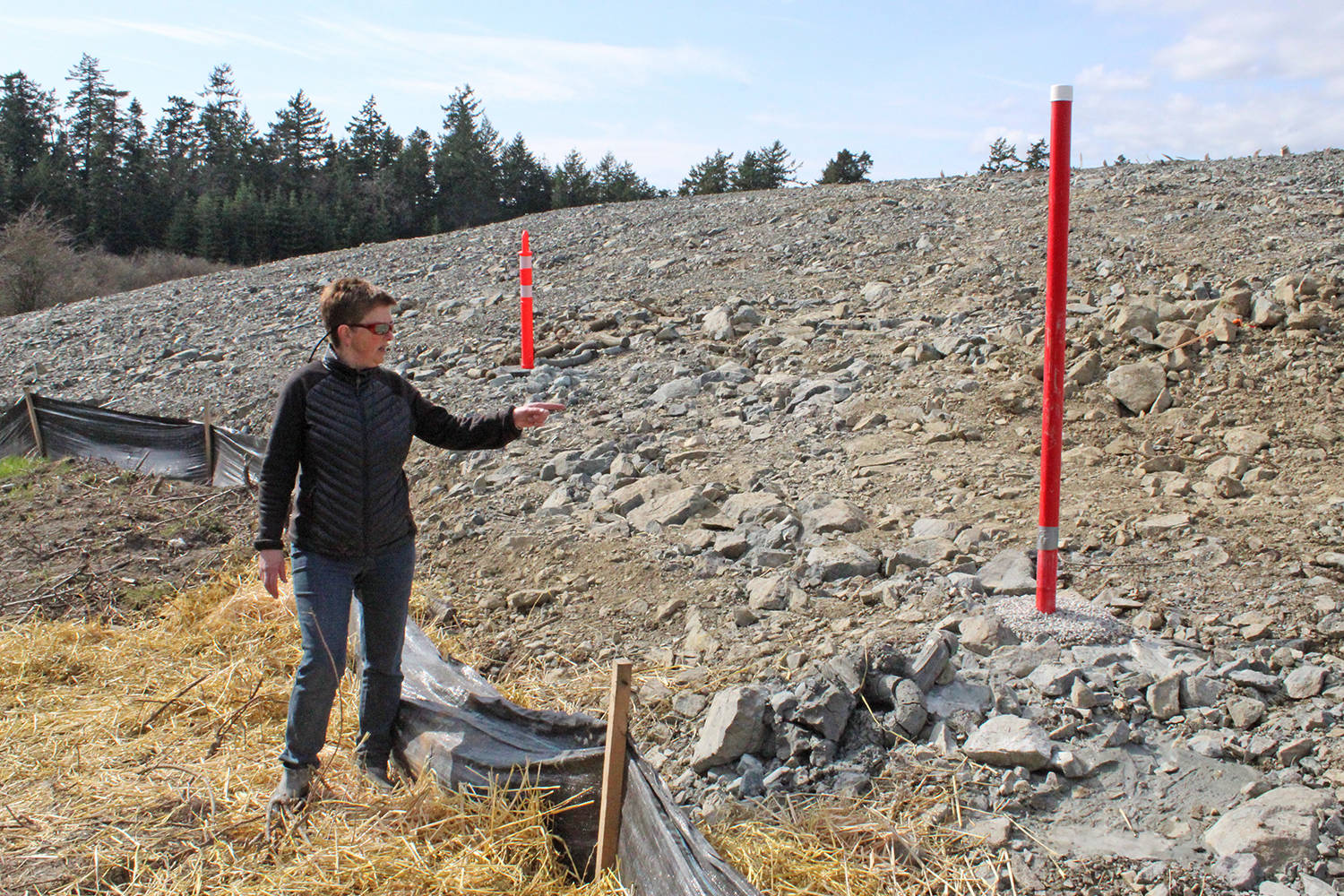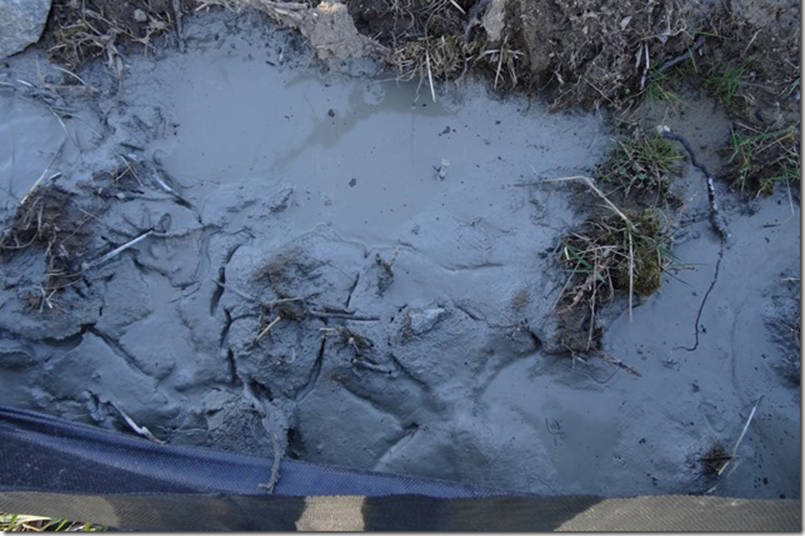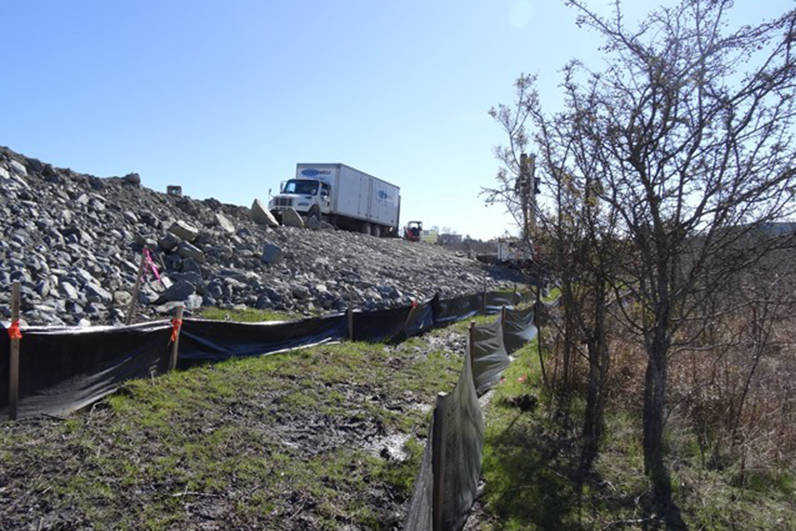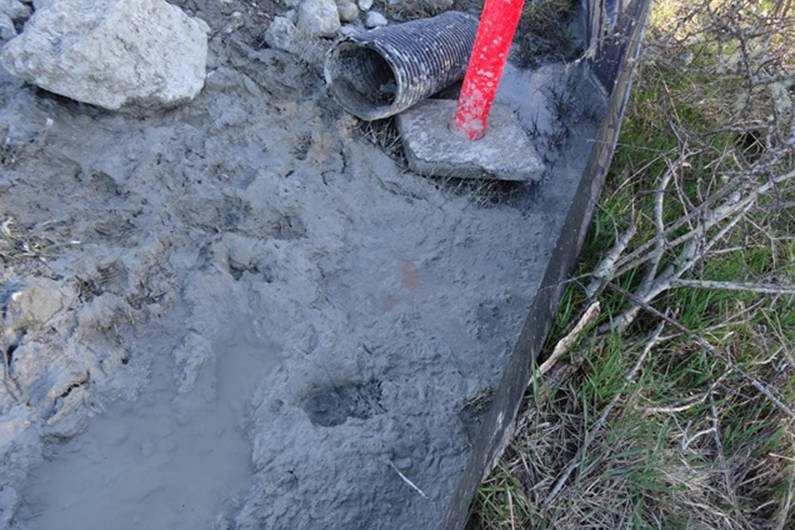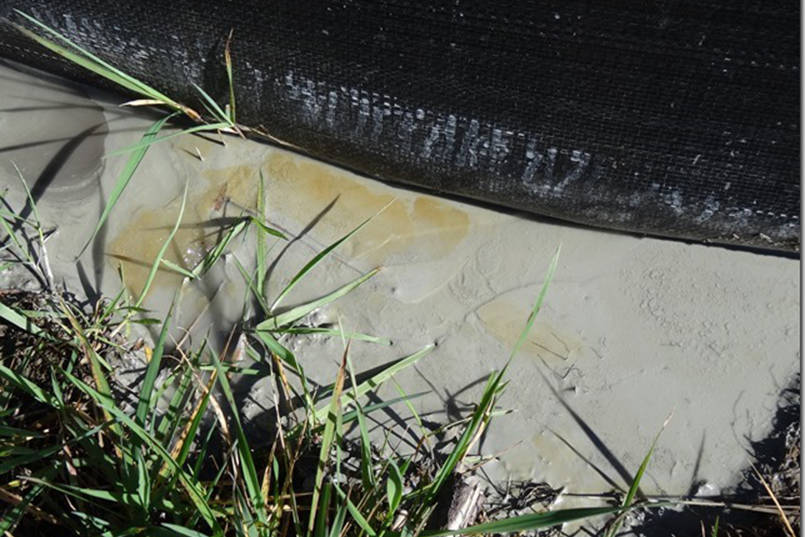A longstanding steward of Cuthbert Holmes Park was stunned to find wet cement making its way into the salmon-bearing Colquitz River estuary from the McKenzie interchange construction last week.
It’s the latest contaminated source of runoff from the project into the river, and while representatives from the Ministry of Transportation and Infrastructure believe the contamination is minimal, environmental advocate Dorothy Chambers noted this never should have happened in the first place.
“Our environmental tests showed there was no cement in the river,” said Janelle Erwin, MOTI deputy director, south coast region.
However, Chambers disagreed. It was Chambers who discovered the contamination and pooling of cement, which has since hardened against the silt fences that crews placed to protect the park from runoff.
“I think it’s a ridiculous assumption on their part that wet cement didn’t reach the water,” Chambers said. “There were no monitors were on site, it was a mininum four to six hours before testing, and I’m quite sure it was the next day they tested [a running river]. When I returned everything was moved, the drill equipment, and a vacuum truck was there removing materials.”
Chambers talked to members from all levels of government, municipal, federal, and provincial, and said concern went beyond the contamination, as the spill should have been reported immediately.
“This is something that absolutely has to be reported immediately by the crew who did this, and they didn’t,” Chambers said. “It was up to me to report it, and as soon as I did, there was an investigation, straw was laid and a pump truck came to remove contaminants.”
Wet cement, clay and sediment are all threats to the young salmon which live in the Colquitz River, said Chambers, who leads the Colquitz fish counting project.
Work on the $85 million project is bustling with an expected completion date for mid-2019, with heavy duty rock scaling, removal and excavation underway. A berm of rock and fill is also filling up fast on the border of Cuthbert Holmes Park between the highway and Burnside Road.
It’s along the edges of the construction border with Cuthbert Holmes that a series of drill holes were made last week, up to 70 feet deep. A ministry statement said that once drilling was completed, an instrument to measure slope stability was installed with grout to hold it in place within the hole. The grout was a mixture of bentonite grout and Portland cement.
MOTI confirmed that there was an environmental investigation completed and that a vacuum truck was used to remove the accumulated sediment from the bases of the silt fences and some of the light layer of sediment on the grass (as much as possible without disturbing the vegetation) and the remainder was covered by straw.
However, the ministry statement said that its silt fences captured the majority of the clay sediment and that the results of an independent environmental consultants’ investigation show there was no contaminated runoff.
“It was a mixture of the non-chlorinated potable water (used to lubricate the drill) and the native subsurface clay that was disrupted while drilling the hole,” said MOTI. “The clay sediment mixed with the ground water and caused it to become murky and grey-coloured. It was not the use of grout that caused the change in water colour.”
MOTI also said that before any more drilling occurs near the silt fences, all existing silt fences are being examined and repaired as needed. As well, during future drilling activities, crews will continuously walk between the last silt fence and the river.
But Chambers and others in the area see it as just another incident of contaminants making their way from the McKenzie interchange to the Colquitz River and estuary.
- This story was updated for clarity on March 22
